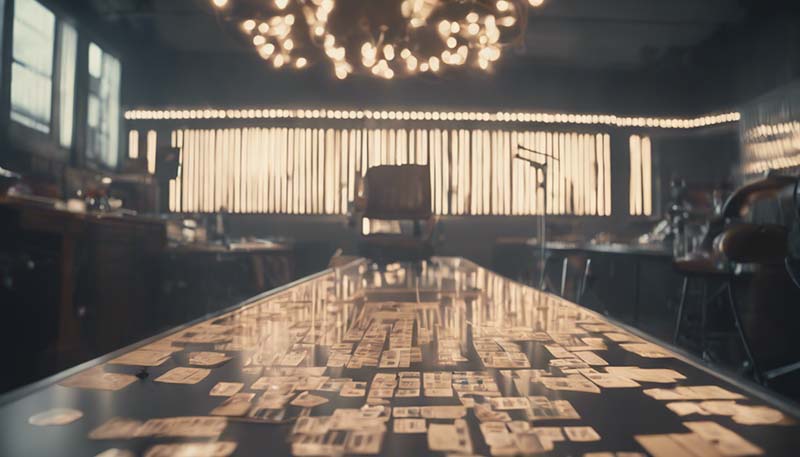The Power of Film Editing: A Study of Pacing, Rhythm, and Narrative Flow
The Power of Film Editing: A Study of Pacing, Rhythm, and Narrative Flow
Film editing is a craft that transcends the technical aspects of assembling a motion picture. At its core, editing is the art of shaping the narrative and enhancing the storytelling through the careful arrangement of shots. The power of film editing lies in its ability to manipulate time and space, creating a seamless and immersive experience for the viewer. This article delves into the critical components of film editing: pacing, rhythm, and narrative flow.
Introduction to Film Editing
Film editing is the process by which raw footage is selected, arranged, and combined to tell a coherent story. It involves creative and technical decisions that can significantly influence the final product's emotional impact, narrative clarity, and overall pacing. The editor collaborates closely with the director to ensure that the vision for the film is realized on screen.
Pacing in Film Editing
Pacing refers to the speed at which a film's story unfolds. Effective pacing keeps the audience engaged and maintains their interest throughout the film. It can be influenced by various factors, including the length of shots, the transitions between them, and the use of visual and auditory cues.
Advertisement
Long Shots vs. Short Shots
Long shots provide a broader view of the scene and are often used to establish the setting or to convey a slower, more contemplative pace. In contrast, short shots, or quick cuts, can create a sense of urgency and excitement, accelerating the narrative pace.
Transitions
Transitions are the techniques used to move from one shot to another. They can be as simple as a straight cut or as complex as a dissolve or match cut. The choice of transition can affect the pacing by either emphasizing the passage of time (e.g., dissolves) or creating a sudden shift in perspective (e.g., cuts).
Rhythm in Film Editing
Rhythm in film editing is analogous to rhythm in music; it's about the arrangement of elements to create a pattern or beat that guides the viewer's experience. Rhythm can be established through visual cues, such as the repetition of certain shots or actions, or through auditory cues, such as the synchronization of sound effects or music with the visuals.
Visual Rhythm
Visual rhythm is created by the repetition or variation of visual elements within the frame or between shots. It can be used to reinforce themes or motifs, or to create a sense of movement and flow within a scene.
Auditory Rhythm
The sound design and score play a significant role in establishing the film's rhythm. The editor must synchronize the audio with the visuals to ensure that the dialogue, sound effects, and music work together harmoniously to enhance the narrative's rhythm.
Narrative Flow
Narrative flow is the seamless progression of the story from beginning to end. It's about ensuring that the story unfolds logically and coherently, allowing the audience to follow the plot without confusion. The editor's role is to create a structure that supports the narrative's emotional arc and character development.
Continuity Editing
Continuity editing is a technique that ensures the logical and chronological flow of events on screen. It involves matching the action, position, and orientation of characters and objects from shot to shot to maintain a sense of continuity and realism.
Non-Linear Narratives
Non-linear narratives, such as flashbacks or multiple timelines, require a more complex approach to editing. The editor must use visual and narrative cues to guide the audience through the different timelines and ensure that the story remains clear and engaging.

Conclusion
The power of film editing lies in its subtlety and impact on the audience's emotional and intellectual engagement with the story. Through pacing, rhythm, and narrative flow, editors can manipulate the viewer's experience, guiding them through the narrative with precision and artistry. As technology evolves and new storytelling techniques emerge, the role of the film editor remains central to the cinematic experience.
Understanding the nuances of film editing requires a deep appreciation for the art of storytelling and a keen eye for detail. It's a discipline that combines technical proficiency with creative intuition, making it one of the most critical roles in the filmmaking process.